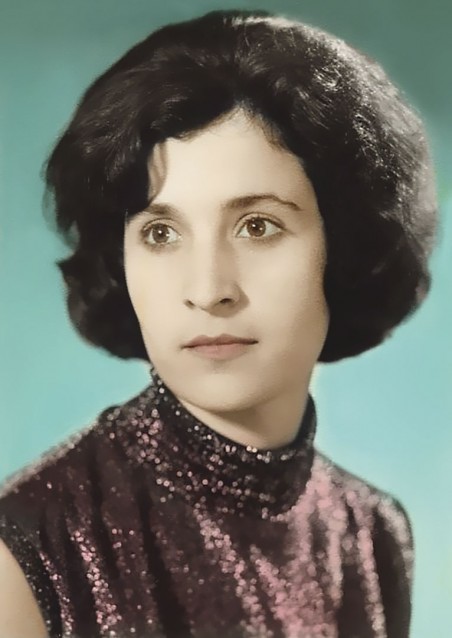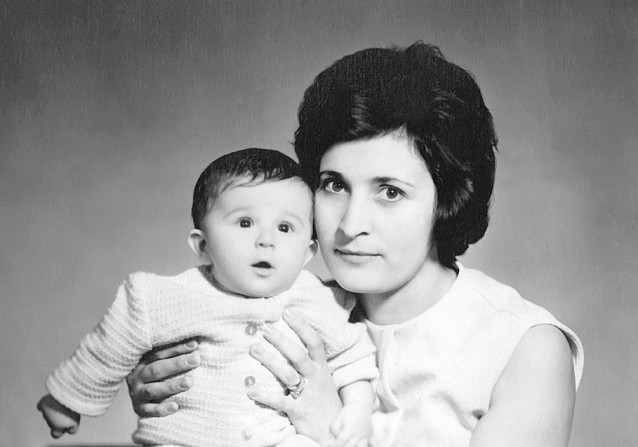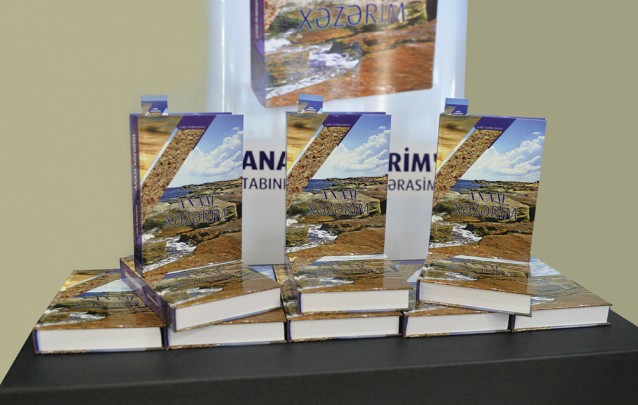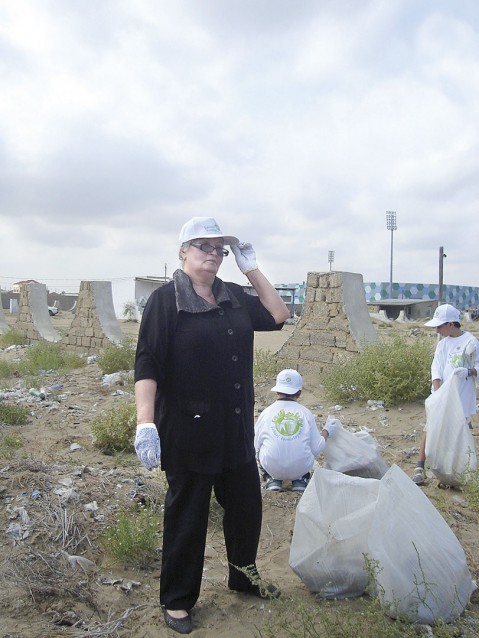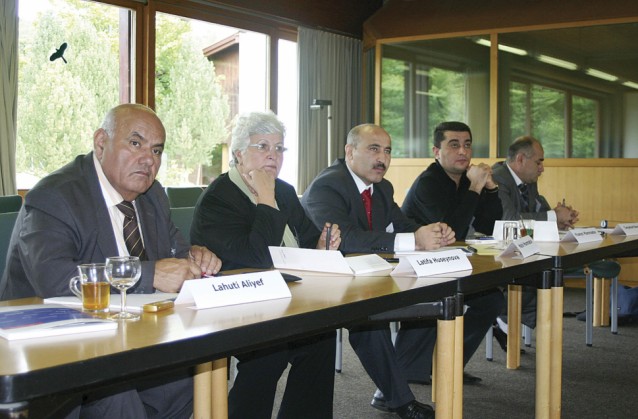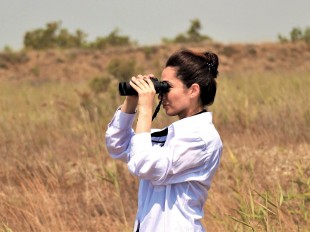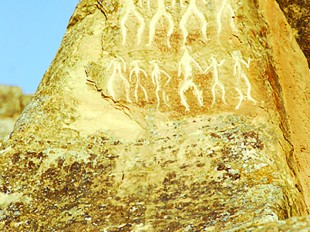This article is devoted to an outstanding woman – an expert in the environmental protection of the Caspian Sea – to Latifa Huseynova, professor of the Eco-Energy Academy, and international expert in her field, who left this world a few years ago.
I got acquainted with Latifa khanim when I began work in the Programme Coordination Unit of the Caspian Environment Programme in 1999. The programme was organised on the initiative of the five Caspian countries (Azerbaijan, Iran, Kazakhstan, Russia and Turkmenistan) in 1995. The countries and donors (UNDP, UNEP, TACIS, the World Bank) signed an agreement dividing responsibilities between the countries in May 1998 in the city of Ramsar in Iran. A Coordination Unit was established in Baku and after four years of operation it was transferred to Tehran. The main purpose of the Caspian Environment Programme was to provide long-term improvement and control of contaminated and degraded biological diversity of the natural environment in the Caspian Sea. To this end, regional thematic centres were established in 10 fields of operation. One of the most complex centres was established in Baku. Latifa khanim worked there from 1998 as Coordinator of the Regional Thematic Centre for the International Programme on Pollution Control of the Caspian Sea. During her time at the Centre, she quite often walked, but sometimes went by boat or ship, to inspect the coastal zone of her beloved Caspian, whose problems she treated with pain in her heart…
She always addressed me with pleasant words like “janim”, “ezizim” (darling, dear). But along with her femininity and benevolence, she possessed a courageous and professional attitude to work.
Some time later, and by chance, I had the opportunity to get to know Latifa khanim and her daughter Gulshan better through a close mutual friend. It is to Gulshan khanim that I owe the opportunity to write about her mother, as I helped with the translation of a book begun by Latifa khanim Huseynova, and finished and published later by Gulshan Huseynova - Anam Xəzərim (My Mother - My Caspian). An encyclopaedic book, it tells the history of the Caspian Sea, its recreational use, ethnography, architecture, flora and fauna.
Exile, a hard school
I would like to start with biographical details. Latifa khanim was born on 12 November 1946 in the city of Tabriz. She wrote about this:
In 1938 my father, Mammad Ghulam oghlu, was sent into exile from Baku to Iran (he was originally from South Azerbaijan and thus an Iranian citizen, which is why he was given 24 hours to return to his homeland). And my mother, 40 days after the birth of my sister Humay, followed my father with three children, also taking my elder sister and brother. Why after those 40 days, called ‘chille’? Because during this period the new baby and mother are very vulnerable to ‘evil spirits’ and Azerbaijani tradition does not recommend going out, receiving guests etc.
Thus, in 1946, I was born in Tabriz, followed by my younger brother and sister. The youngest child – Sima - was born in 1955, after our family was rehabilitated and returned home.
This is how the character of this girl – the young Latifa Huseynova, who was interested in science and knowledge from childhood, and in constant search – endured the difficulties of life. The fate of someone born in exile and returned to her homeland, whose special perseverance, stubborn spirit, fearlessness in the face of difficulties and ability to speak the truth directly only increased as a result. In 1964 she entered the faculty of chemistry at Baku State University. An active student, she chose a complex route to follow – the chemistry of macromolecular compounds, deciding to specialise in the chemistry of polymers.
She graduated from the University in 1969. In January 1970 she married Nazim Mir-Bashir oghlu Huseynov and the same year gave birth to their only child, their daughter Gulshan.
Family and career
From Gulshan Huseynova’s reminiscences about her mother:
It was my mother who, at every stage of my life, was the first listener, the first reader, who awakened in me an interest in nature, culture and reading. She devoted every free moment to her family. We read books together, went to the theatre, the cinema, to the seashore together. Not many knew what a subtle sense of humour Latifa khanim had, how well she could knit and cook and bake delicious sweets.
Being outwardly a strong person, she had a subtle soul and suffered the events of 20 January and the Khojaly tragedy with pain in her heart. Latifa khanim often visited the Avenue of Martyrs. Wherever she was, whichever country she visited, she always visited holy places. “Whether it’s a mosque or a church it does not matter, it’s all the house of Allah,” she said, thus making no distinction. “There are no bad people in life, there are bad attitudes,” she said, and therefore never encountered bad people.
Latifa khanim began to work as a laboratory assistant on 4 May 1970. As a chemist with a higher education, she was offered a post as an engineer but she refused the offer and proceeded to work from the lowest position, arguing that she wanted to study everything.
From 1974 to 1986, she was working for the Committee for Environmental Protection as a senior engineer in the Chemical Analysis of Environmental Pollution laboratory. In 1984, she was appointed head of the by now renamed Agrochemical Laboratory.
Dedicated, to ecology….
Her creative work took Latifa khanim to the post of State Inspector in the current Caspian Complex Environmental Monitoring Department of the Azerbaijan Basin Water Purification Authority (also called Xəzərsunəzarət, ‘‘Caspian Control’’). At the same time, a pioneering microbiological and eco-toxicological seawater laboratory was opened in Azerbaijan on her initiative. Experiments were conducted on mullet, carp, sturgeon fry and shrimp with very practical results, as described in Anam Xəzərim:
….From chemical, biological and eco-toxicological analyses they discovered that there were hazardous effects on living organisms in the Caspian Sea from the Saraline fluid used by BP in the [offshore – Ed.] Chirag oilfield. With the support of the late President Heydar Aliyev use of the fluid was prohibited in the Azerbaijani zone of the Caspian. Co-workers and Latifa khanim’s family witnessed her struggle for this outcome. Even though she hid her emotions, she was deeply disappointed by some people…. [who] prepared reports in the company’s favour and supporting use of the fluid without thinking of future generations. They used their scientific qualifications to accuse her of exaggerating the results. Despite this, the reagent was banned from the Azerbaijani zone and, a few years later, from the Mexican Gulf too.
In any research, Latifa Huseynova preferred a reason-result analysis and required the same from her staff. She was well known for this, which is probably why international companies drilling for oil in the Caspian Sea always turned to her to prepare environmental evaluations and any other ecological issues.
From 1995 to 2007, she worked for BP, AMOCO, ExxonMobil, Statoil, TotalFinaElf, Aquamilio and Azeri MI-Drilling as an oilfield expert. She worked on Environmental Impact Assessments, organising various training sessions, informing staff about legislation and leading analytical and eco-toxicological research. With the money received for her work she bought equipment for the laboratory….
She was made Professor of the International Eco-Energy Academy in 1999. In 1983, she was awarded the medal For Distinguished Labour, three honorary certificates, and in 1999 she was awarded the TACIS Certificate for achievement in the Caspian Environment Programme.
… to society and home
With the Ministry of Ecology and Natural Resources, Latifa khanim also initiated the Genj Khezerchiler (Young Caspian Lovers) club, which educated and helped children to care about the environment. The club members learned about ecology and Azerbaijan’s unique nature. They heard lectures on various topics and entered painting and essay competitions like The Caspian Sea in Azerbaijani Literature. There were also practical clean-up days, during which they learned much from Latifa khanim’s input. Despite her health problems, Latifa khanim worked hard along with young people even after her retirement.
Latifa khanim did not like to discuss the good deeds she did and did not chatter with anyone about them. One day, for example, in May 2001, she was pleasantly surprised when Mir-Movsum Agha’s successor – Haji Hasanagha Seyidov and the staff of his [charity – Ed.] foundation awarded her the Honorary Mir-Movsum Agha Award for her traditional help to people and invaluable charity events. Mir-Movsum Agha was a Seyid (descended from the Prophet), who lived in the historical part of the city – Icheri Sheher – and was revered by people as a saint able to heal the infirm. The foundation was created by members of Mir-Movsum Agha’s family and awarded only those people who helped others and engaged in charity. Usually averse to awards, Latifa khanim was very happy to receive this one bearing the name of this saintly man.
And finally again from Gulshan’s memoirs:
….it may be said that Latifa khanim was never at home on our favourite holiday – in the run up to Novruz Bayram. We helped my grandmother and aunts to bake sweetmeats – shekerbura, baklava. At the very end, on the eve of the last chershenbe akhshami [Tuesday – Ed.] we, the three of us, would start baking at home. Whatever happened, my mother always started cooking the holiday sweets by 17 March – my dad’s birthday. That was our custom. We had many such family rules, but most interesting was the fact that although we had drafted them ourselves, we never tried to break them. When one of us was sick, it was bad for all of us. My father told my mother: “No matter what happens, I hope you’re never ill and in any case don’t you dare leave this world before me. I won’t manage alone with Gulshan.” My mother laughed and replied that no one knew who Azrael would take first, but him. Alongside the fact that my father was a descendant of a holy family – the Seyids – his behaviour was also righteous. Maybe that’s why God heard his words. They left me one after another, three years apart ......... My dad passed away on 2 June 2010, and my mother on 9 June 2013.